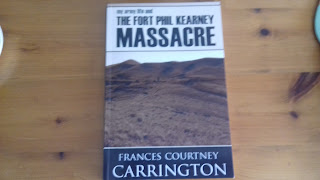THE FEDERATION'S STRUGGLE FOR INDEPENDENCE.
In the autumn of 1873 the UNION sent a number of agents posing as traders into the Federation to seek a better understanding of the situation surrounding possible independence from France and Germany. Although the UNION had two large cities , both with huge military bases, reasonably close to the border, namely Chicago and Lincoln, the huge area between those cities and the southern and central parts of the Federation was largely undeveloped and uninhabited land. There was little interaction with the Federation or its people. However the UNION was keenly interested in the status of the Federation given the hostile nature of France and Germany to the UNION since UNION independence.
The Federation had been originally populated by a limited number of settlers from France and Germany in the rich lands bordering on Germany and to the north west around the town of Seattle, which was connected by rail to Germany. The Germans had also started construction of a railway east towards Boston but progress had been slow because from that area east for about 2000 miles and south towards the border with the UNION the land was mostly unpopulated tracts of forests and rolling grassland supporting vast amounts of wild animals only. The rich farmland to the far east around the town of Boston and on to the border with Canada was populated by French and German settlers who had traveled by sea to Vancouver in Canada and then, together with large numbers of Canadians, trekked overland to the west. Contact with France and Germany was far less than with Canada which supplied the majority of trade with the eastern part of the Federation. In fact in the late 1860's the Canadians provided the loans to pay for and the expertise to construct a railway from Vancouver to Boston, much to the annoyance of the French and Germans. Despite the high costs of loan repayments, the people in the east, the vast majority of the Federations population, viewed Canada much more sympathetically than France or Germany and resented those countries influence over them.
However the Federation remained substantially undeveloped both socially and economically and was only barely sustained by the sale of farm produce to Canada in the east and to a lesser extent to Germany in the west. The theoretically independent government did not have the funds to invest in developing the country and Germany and France refused to provide any investment despite exercising a heavy influence on the government. The seeds of unrest had been sown and were growing ever larger.
UNION agents, posing as travelling traders, reported back that there were a large number of citizens who thought that the Federation should secure full independence from Germany and France and then seek to join with Canada or better still, the UNION. That view was apparently supported by many in government. However there remained a fear of French and German reaction to such a move. The UNION government decided to test how strong these ideas actually were by making formal but secret contact with a number of leading figures in the Federation while seeking an understanding of the Canadian position via the British.
By the middle of 1874 the State department, who led the investigations, reported to the UNION government that they had completed their enquiries. They reported that the Canadians were not at all interested in acquiring any portion of the Federation and in fact would welcome UNION involvement in that country just so long as they secured full repayment of the railway construction loans. Apparently the Canadians were coming under strong pressure from France and particularly Germany to allow the transportation of troops from those nations to the Federation via Vancouver and the rail link to Boston and UNION support to stop this would be very welcome. This news and the long term threat posed by a German railway from Seattle to Boston caused grave concern in the UNION government who had no wish to see substantial numbers of German or French troops in the Federation. In addition the enquiries among Federation politicians and other leading figures showed a very strong enthusiasm, in the east in particular, to join the UNION perhaps by means of a referendum. However they all expressed a belief that the French and Germans would not accept such an idea and would invade if such a plan was implemented.
The UNION government concluded that to ensure the long term security of their northern border they should support a referendum in the Federation and to facilitate it should offer military support to the Federation to deter any French and German invasion. The UNION government also had an eye on the possible benefits of a relationship with a grateful Canada and the potential of a substantial increase in the size of the UNION. Implementation of this new UNION strategy would no doubt set the scene for an explosive confrontation with France and Germany.

























